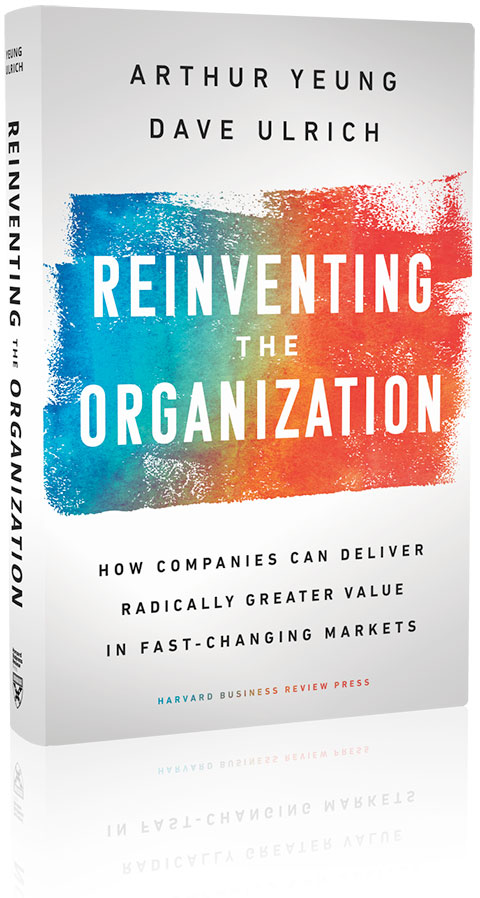Reinventing the Organization
Organizations were designed for stable environments, so how can we reorganize them to win when market conditions are regularly changing fast? Dave Ulrich and Arthur Yeung’s book provides a guide.
Reinventing the Organization

Related Services
Related Insights
To adapt and compete today, forward-looking companies from Amazon to Alibaba are redesigning themselves to shed their past, quickly respond to market opportunities, change their structure, govern for agility and innovation, and empower all leaders to make choices to win.
The book is written by Arthur Yeung, the leading expert on the topic in China, which is a global leader in reinvention, and, Dave Ulrich, the leading expert in the U.S. The authors crystalize the best elements from some of today’s nimblest and fastest growing big companies (Amazon, Facebook and Google in the U.S.; Alibaba, Huawei and Tencent in China; and Supercell in Europe), and from established experimental structures (holacracy, agile, network, platform, boundaryless and more). The result is an integrated model for reinvention.
While most companies only structure their organizations based on what goes on inside, reinvented organizations also look to what’s outside: their networks, their partners and the marketplace they want to dominate. For example:
- Amazon is forming close relationships with external partners that are able to expand its ecosystems in smart homes, digital content, and the marketplace.
- Alibaba pivoted from online B2B to C2C to Alipay to logistics to Tmall in order to stay current with its mission: “To make it easy to do business anywhere.”
- Tencent expects its many product and business teams to each be a category leader on its own while sharing key resources and capabilities with other groups at the same time.
Learning the logic and principles from these companies that the authors had direct access to will help organizations avoid becoming the next Blockbuster, Sears or Nokia that failed to reorganize when market conditions shifted. Once leaders learn these principles, they’ll learn to let go of organizational assumptions and will instead capitalize on a design logic and language for reinvention. Organizations will learn to examine unstructured data for what could be instead of structured data that has been and how to pivot to opportunities fluidly that will transform a company as fast as the environment changes.
Click here to learn more about Organization Strategy & Transformation.
Table of Contents
Preface
Chapter 1: A New Organization (download)
PART I — The Context
Chapter 2: The Environment
Chapter 3: Strategic Agility
PART II - The New Organization Form
Chapter 4: Ecosystem Capabilities
Chapter 5: Morphology
PART III - Governance
Chapter 6: Culture
Chapter 7: Performance Accountability
Chapter 8: Idea Generation
Chapter 9: Talent Pipeline
Chapter 10: Information Sharing
Chapter 11: Collaboration
PART IV - Turning Ideas Into Impact
Chapter 12: Leadership
Chapter 13: Transforming Your Organization



